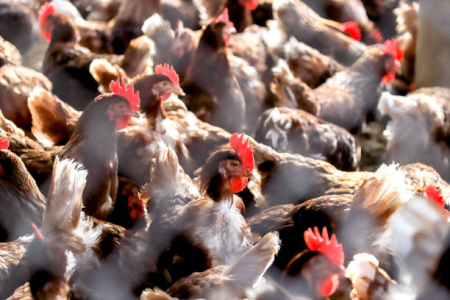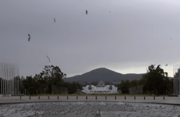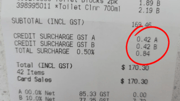Health authorities scramble as they reveal the re-emergence of this virus!
By
Gian T
- Replies 0
If you’ve been following the news lately, you might have noticed a few headlines about bird flu making the rounds.
But this isn’t just another health scare—according to Threatened Species Commissioner Fiona Fraser, it’s a looming reality that Australia needs to prepare for.
In fact, she says it’s 'almost certain' that the highly contagious H5 strain of bird flu will reach our shores.
Bird flu, or avian influenza, is a viral infection that primarily affects birds but can sometimes jump to humans and other animals.
The H5 strain, in particular, has been causing havoc across the globe, leading to mass culls of poultry, egg shortages, and even impacting wild bird populations.
While Australia, New Zealand, and the Pacific Islands have so far managed to keep the virus at bay, experts warn that our luck may soon run out.
Commissioner Fraser paints a sobering picture: 'We literally have millions of sea birds and shore birds reaching Australia’s shores, and they essentially land all around Australia, along our wetlands and coastal areas to breed.'
With the spring migratory season approaching, the risk of the virus hitching a ride on one of these feathered visitors is higher than ever.
In other words, Australia is 'essentially surrounded' by potential carriers.
Here’s the tough part: once bird flu arrives, it’s almost impossible to stop it from spreading in the wild.
'We will not be able to prevent its spread in nature, and we will not be able to eradicate it in nature,' Fraser admitted.
However, she’s quick to point out that we can still take steps to protect our native bird populations and captive species, building their resilience to withstand the disease.
The government isn’t taking this threat lightly. An extra $12 million has been committed to bolster Australia’s response, bringing the total funding to $100 million.
Emergency Management Minister Kristy McBain says the National Emergency Management Agency has been working overtime, running through 'worst-case scenarios' with states, territories, industry, and civil groups.
And these scenarios aren’t just about bird flu. Imagine dealing with an avian flu outbreak at the same time as a bushfire or even a cyber attack!
It’s a lot to juggle, but the government is determined to be ready for anything.
If you remember the H7 bird flu outbreaks, you’ll know they led to some pretty serious disruptions—think egg shortages and mass culling of chickens.
Agriculture, Fisheries and Forestry Minister Julie Collins says the government has learned a lot from those experiences and is working closely with industry and retailers to keep our food supply secure.
There’s also a national food security strategy in the works, set to be finalised between 2026 and 2027, which will include the creation of a national food council.
Weekly meetings with groups like Egg Farmers of Australia and the Australian Chicken Meat Federation are already underway to keep everyone on the same page.
It’s not just about food security. Australia is home to some of the world’s most unique and precious bird species, many of which are already under threat from habitat loss and climate change.
An outbreak of bird flu could be devastating for these populations, so every bit of preparation counts.
 Have you made any changes to your shopping or cooking habits because of bird flu concerns? Are you a backyard chook keeper with tips to share? Or maybe you’re just keen to know more about how Australia is preparing. Let us know your thoughts, questions, or experiences in the comments below.
Have you made any changes to your shopping or cooking habits because of bird flu concerns? Are you a backyard chook keeper with tips to share? Or maybe you’re just keen to know more about how Australia is preparing. Let us know your thoughts, questions, or experiences in the comments below.
Read more: ‘Must not leave your property’: Strict new rules as authorities race to contain outbreak
But this isn’t just another health scare—according to Threatened Species Commissioner Fiona Fraser, it’s a looming reality that Australia needs to prepare for.
In fact, she says it’s 'almost certain' that the highly contagious H5 strain of bird flu will reach our shores.
Bird flu, or avian influenza, is a viral infection that primarily affects birds but can sometimes jump to humans and other animals.
The H5 strain, in particular, has been causing havoc across the globe, leading to mass culls of poultry, egg shortages, and even impacting wild bird populations.
While Australia, New Zealand, and the Pacific Islands have so far managed to keep the virus at bay, experts warn that our luck may soon run out.
Commissioner Fraser paints a sobering picture: 'We literally have millions of sea birds and shore birds reaching Australia’s shores, and they essentially land all around Australia, along our wetlands and coastal areas to breed.'
With the spring migratory season approaching, the risk of the virus hitching a ride on one of these feathered visitors is higher than ever.
In other words, Australia is 'essentially surrounded' by potential carriers.
Here’s the tough part: once bird flu arrives, it’s almost impossible to stop it from spreading in the wild.
'We will not be able to prevent its spread in nature, and we will not be able to eradicate it in nature,' Fraser admitted.
However, she’s quick to point out that we can still take steps to protect our native bird populations and captive species, building their resilience to withstand the disease.
The government isn’t taking this threat lightly. An extra $12 million has been committed to bolster Australia’s response, bringing the total funding to $100 million.
Emergency Management Minister Kristy McBain says the National Emergency Management Agency has been working overtime, running through 'worst-case scenarios' with states, territories, industry, and civil groups.
And these scenarios aren’t just about bird flu. Imagine dealing with an avian flu outbreak at the same time as a bushfire or even a cyber attack!
It’s a lot to juggle, but the government is determined to be ready for anything.
If you remember the H7 bird flu outbreaks, you’ll know they led to some pretty serious disruptions—think egg shortages and mass culling of chickens.
Agriculture, Fisheries and Forestry Minister Julie Collins says the government has learned a lot from those experiences and is working closely with industry and retailers to keep our food supply secure.
There’s also a national food security strategy in the works, set to be finalised between 2026 and 2027, which will include the creation of a national food council.
Weekly meetings with groups like Egg Farmers of Australia and the Australian Chicken Meat Federation are already underway to keep everyone on the same page.
An outbreak of bird flu could be devastating for these populations, so every bit of preparation counts.
Key Takeaways
- Experts warn it’s 'almost certain' that the highly contagious H5 bird flu will reach Australia, especially with the spring migratory bird season increasing the risk of incursion all around the country.
- The government has increased funding to a total of $100 million to bolster Australia’s response to a possible bird flu outbreak, acknowledging the disease cannot be eradicated in the wild.
- Emergency planning is underway at both national and state levels, with agencies, industry, and emergency services preparing for worst-case scenarios, including the possibility of simultaneous emergencies like bird flu, bushfires and cyber attacks.
- Ongoing discussions between industry, retailers and government are focused on food security and lessons learned from previous outbreaks, with a national food security strategy and food council to be established by 2026–2027.
Read more: ‘Must not leave your property’: Strict new rules as authorities race to contain outbreak








